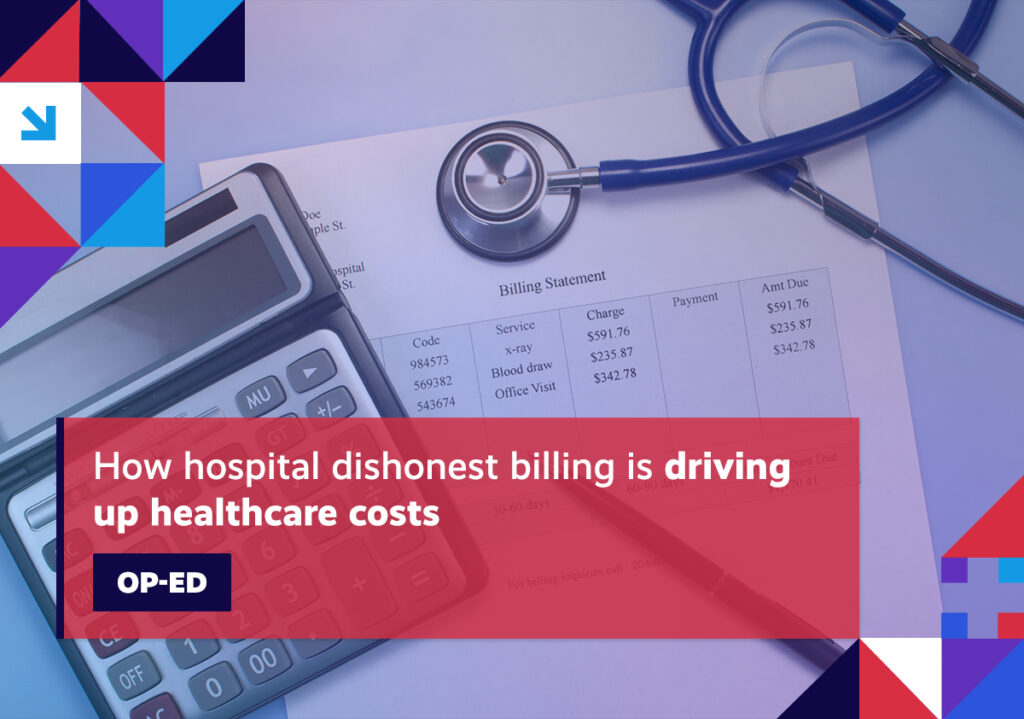A quick roundup of the issues driving the healthcare reform conversation.
Item of the Week

Spotlight
DISHONEST BILLING A new proposal targets hospitals’ dishonest billing.
Quick takeaway: The bipartisan bill would put an end to hospitals billing more for services delivered at their non-hospital locations as if they were delivered in a hospital setting.
Further context: Off-campus hospital outpatient departments are currently being paid more by Medicare and private insurers for the same services that patients receive at physician offices. That’s because hospitals have been billing Medicare and private insurers as if the services delivered there were performed in a more expensive hospital setting.
What it means: The new bipartisan proposal from Reps. Kevin Hern (R-Oklahoma) and Annie Kuster (D-New Hampshire) would fix this issue by requiring all off-campus outpatient departments owned by hospitals to have separate national provider identification (NPI) numbers to bill under by the beginning of 2025 and to submit claims on forms that transparently identify where the medical service was delivered.
The bill was immediately celebrated as a step in the right direction to curtail rising costs by policy experts, business groups, and other healthcare stakeholders.
HEALTHCARE COSTS More Americans skipped medical care last year due to costs.
Quick takeaway: During the height of the coronavirus pandemic, a record low share of Americans skipped medical treatment, likely as a result of COVID-era stimulus money and greater access. However, a new survey shows that those numbers rose substantially last year.
Digging deeper: Inflation was historically high in 2022, causing many Americans to cut back on spending – including healthcare. The most commonly skipped form of medical care was the dentist, followed by seeing a doctor and filling a prescription.
What it means: It’s no secret that the ability to afford healthcare often translates into better health outcomes. Against that backdrop, a separate report provides little comfort in terms of the trajectory of healthcare costs.
According to the data, the average annual healthcare costs for a family of four is now just over $31,000, an increase of 5.6 percent from last year. For individuals, that cost reached approximately $7,200.
Rx MARKUPS Employers paid more than Medicare for physician-administered drugs.
Quick takeaway: According to a newly published analysis of claims data and Medicare files, employer-sponsored health plans pay significantly more than Medicare for high-cost physician-administered medicines.
Further context: Between 2016 and 2020, price markups increased for five of the top ten drugs that account for the most spending – more than doubling for three of them.
What it means: The study highlights the added financial pressure employers already face as a result of rising medical costs. While that cost burden is shared with their workers through premium increases or high-deductible plans, the tight labor market makes it increasingly important for employers to offer competitive benefits packages to attract talent.
HOSPITAL BAILOUTS California hospitals are looking for a bailout – despite many of them not needing one at all.
Quick takeaway: An investigative analysis uncovered that wealthy hospitals in California are looking to siphon money away from facilities serving some of the state’s poorest patients.
Further context: The issue stems from a 2009 financing scheme that hospitals across the state agreed to that allows them to tap into billions more per year in taxpayer dollars to support the state’s Medicaid program.
Now, some of those hospitals serving that population face dire financial circumstances, including cutbacks or even closing. But, rather than seeking assistance for only those hospitals, California’s powerful hospital industry is putting the squeeze on lawmakers for an unprecedented bailout, even as the state faces a nearly $32 billion budget deficit.
Not only are they seeking an emergency infusion of $1.5 billion, they’re also looking to open up a steady annual stream of new healthcare tax dollars.
What it means: But, the analysis revealed that, even despite increased labor costs and inflation, many California hospitals have been profitable in recent years. In fact, the industry earned roughly $131 billion last year in patient revenue – $7.3 billion more than the previous year. After accounting for rising costs, the industry still turned a profit of around $207 million in 2022.
Spotlight

| You can keep up with the latest by following the Health Action Network on Twitter and by liking us on Facebook. And, be sure to check us out on LinkedIn, too. As always, let us know if there’s something you’d like to see covered in a future newsletter. |
The Health Action Network includes everyday Americans—families, workers, businesses, patients, providers, neighbors, and friends. We are working together because we support market-based solutions that offer better healthcare choices and help build a stronger economy. The Health Action Network is an Elevance Health, Inc., initiative.
